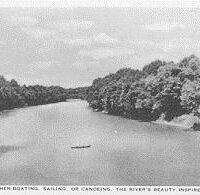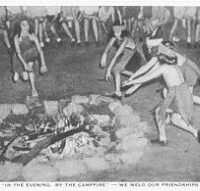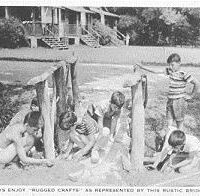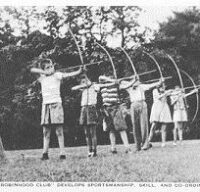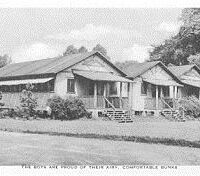From 1919 until 1968 Camp Livingston for children ages 6-16 flourished in Indian Hill on north Given Road, at the site of current day village soccer fields and Livingston Lodge. The vital role of the camp on the banks of the Little Miami River and its summer joys are recalled by former campers and counselors.
Originally named the Helen Trounstine Camp, its name was changed in 1920, when H. S., Livingston established a memorial for his only son, Lt. Robert Krohn Livingston, who died during the influenza epidemic of World War I. Livingston’s father sought to establish a summer camp where children could experience growth and maturation in a trusting, caring environment. He equipped the site with barracks style buildings and funded the conversion of the land to athletic fields.
Before the camp moved to Indiana in 1969, more than 15,000 campers came “from the crowded West End…to enjoy a few days vacation and taste of life in the open…with pure air and wide open spaces.” For the first 20 years the boys and girls had separate sessions, but in the 1940’s the camp became co-educational. Program choices included most sports, drama, canoeing, handicrafts, nature study, and photography. The camp grew to 25 acres, and a swimming pool was constructed for the required swimming lessons. There were also tennis courts, ball fields, and two campfire areas.
Camp group projects included building a duck pond, a chicken coop, and a primitive outdoor chapel of tree stumps. There was more emphasis on learning to work together than on competition. Daily inspections, flag ceremonies, and songfests were part of the program, along with skit night, amateur nights, and an occasional overnight primitive camping trip to Camp Friedlander.
Though Camp Livingston was predominantly Jewish, children of other faiths attended. Most were from Cincinnati, but some came from Michigan, Tennessee, West Virginia, and Kentucky. There was no religious curriculum, although informal services were held on the Sabbath, and Kosher style food was served in the Mess Hall. Scholarships were available to the needy to cover the 1940’s cost of $7 per week.
Livingston Lodge was the Rec Hall, and the Elliott House was the Director’s residence. Four cabins for girls (“The Alps”) were up on the hill, and the three boys’ bunkhouses were across Given Road near a pathway to the river. In the Mess Hall behind the Director’s house, a favorite item on the menu was corn fritters made by the caretaker’s wife (Mrs. Brooks.) Other buildings included a small barn for the horses, a hobby house, and a canteen where campers could buy candy or postcards.
Camp Livingston’s facilities were rustic, but former campers remember Livingston as having a “special magnetic field.” Many fondly recall its location amid Indian Hill’s greenery along the banks of the Little Miami as an oasis or a “Garden of Eden.”

